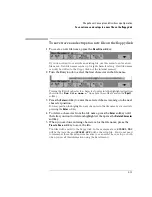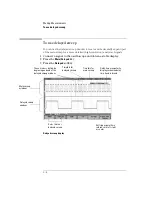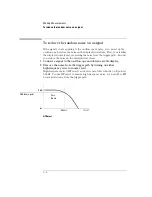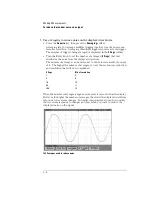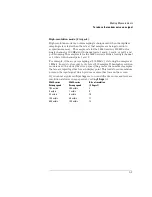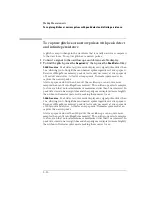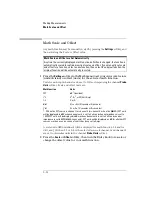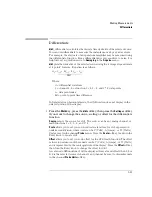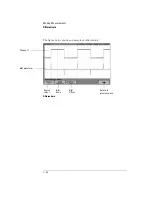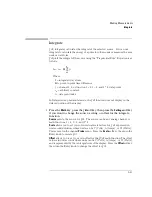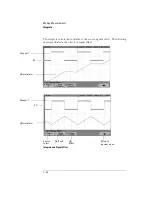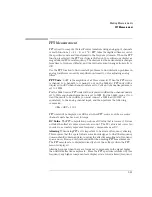
5-11
Making Measurements
To capture glitches or narrow pulses with peak detect and infinite persistence
3 Press the
Display
key then press the
∞
Persist
(infinite persistence)
softkey.
Infinite persistence updates the display with new acquisitions but does not erase
previous acquisitions. New sample points are shown at normal intensity while
previous acquisitions are displayed in minimum intensity. Waveform persistence
is not kept beyond the display area boundary. Any time you change a waveform
setting such as sweep speed, delay time, vertical sensitivity, or offset, the
previous acquisitions will be erased, then begin to accumulate again.
Use infinite persistence to measure noise and jitter, to see the worst-case
extremes of varying waveforms, to look for timing violations, or to find
infrequent events.
Press the
Clear Display
softkey to erase previously acquired points. The display
will again accumulate points until
Clear Display
is pressed or
∞
Persist
is turned
off.
4 Characterize the glitch with delayed sweep.
To characterize the glitch with delayed sweep, follow these steps:
• Press the
Main/Delayed
key, then press the
Delayed
softkey.
• To obtain a better resolution of the glitch, expand the time base.
Use the horizontal delay time knob (
)to pan through the waveform to set the
expanded portion of the main sweep around the glitch.
To characterize the glitch, use the cursors or the automatic measurement
capabilities of the oscilloscope.
Summary of Contents for 54621A
Page 4: ...iv ...
Page 10: ...Contents 6 ...
Page 11: ...1 Getting Started ...
Page 38: ...1 28 ...
Page 39: ...2 Front Panel Overview ...
Page 63: ...3 Triggering the Oscilloscope ...
Page 117: ...4 MegaZoom Concepts and Oscilloscope Operation ...
Page 171: ...5 Making Measurements ...
Page 222: ...5 52 Making Measurements Making overshoot and preshoot measurements ...
Page 223: ...6 Utilities ...
Page 239: ...7 Performance Characteristics ...
Page 250: ...7 12 Performance Characteristics Agilent 54620 series Performance Characteristics ...
Page 260: ...7 22 ...

